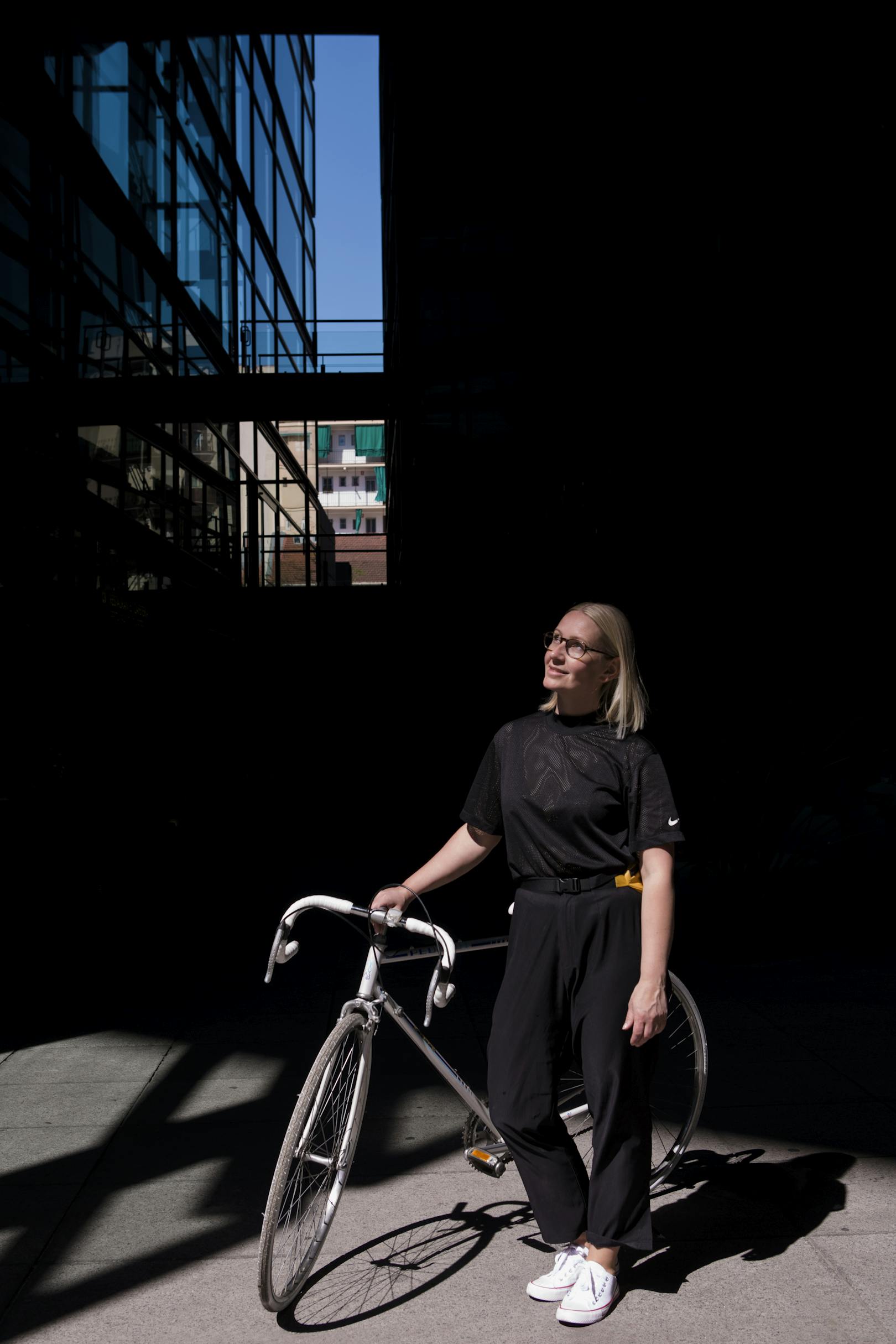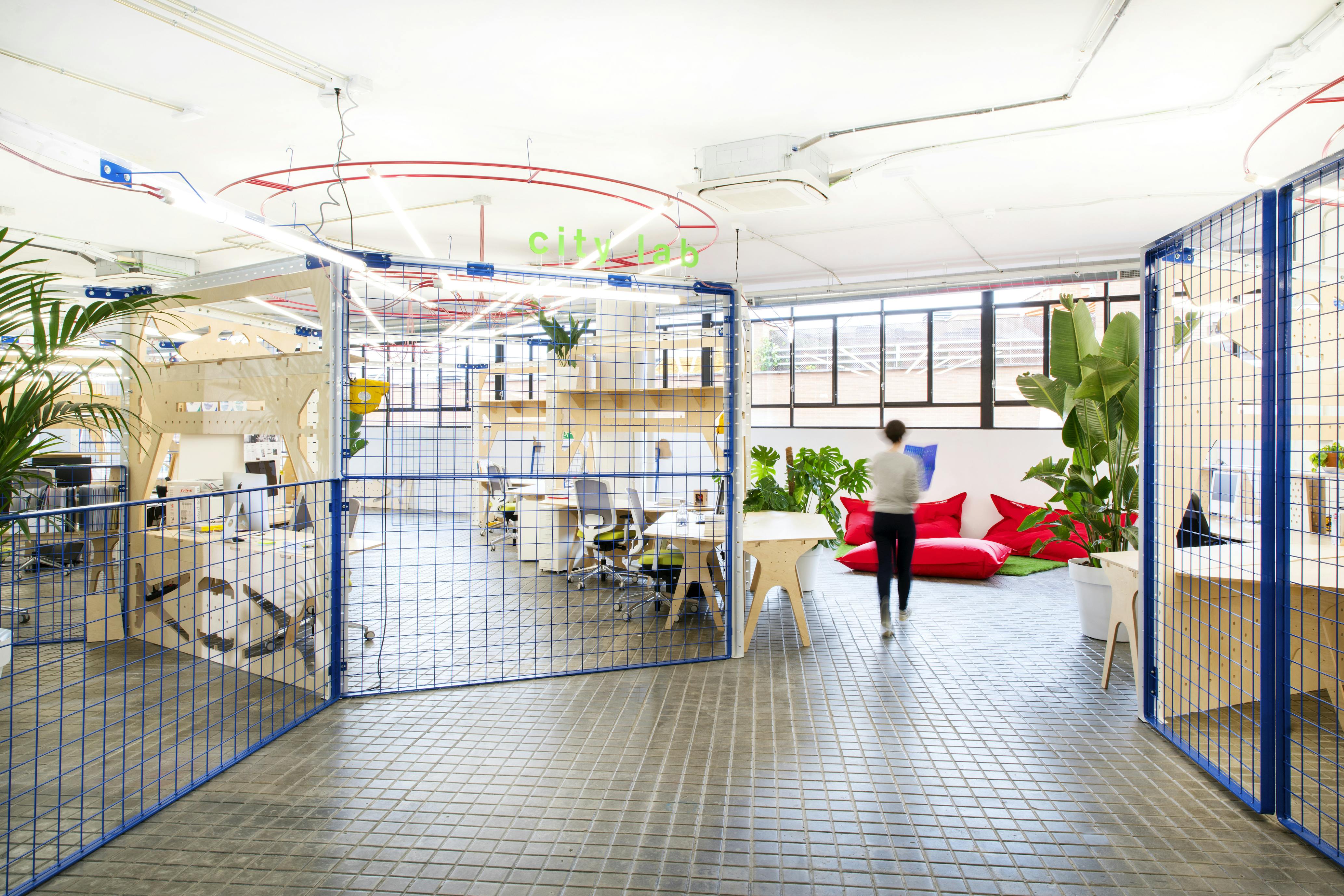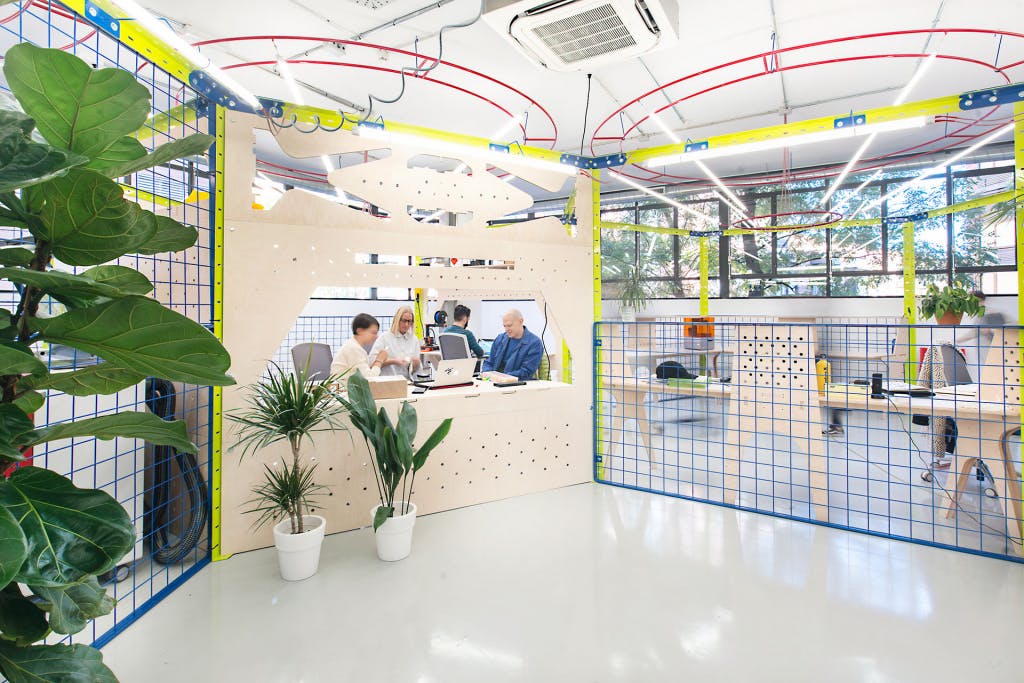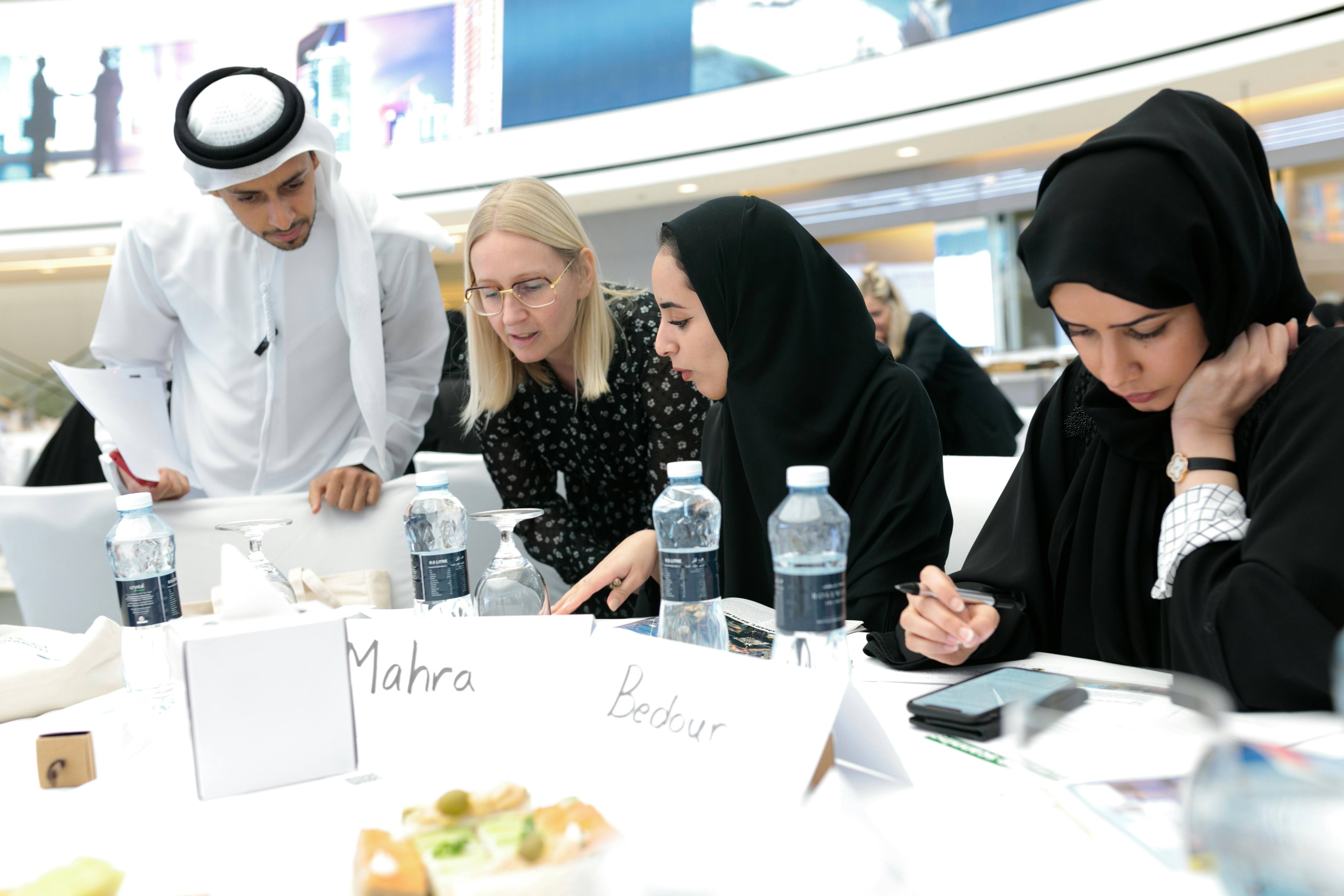We can design the future

First published in HA Issue no. 09, 2019.
Product designer and futurist Helga Jósepsdóttir travels around the world and consults about what is to most of us a mystery – the future.
From the East Fjords to the Middle East
Helga has often taken unconventional paths through life. She was born in Eskifjörður, in East Iceland, studying metalwork at college and product design at the Iceland University of the Arts and IED-Madrid in Spain. After graduating in the spring of 2011, Helga was offered a work-study position at the renowned Domaine de Boisbuchet summer school in France. As things developed, she was quickly put into the position of manager, where she stayed for two years. After that, she took a job at SPACE10, the future living lab of IKEA in Copenhagen, where she worked on, amongst other things, increasing sustainability in IKEA’s food production and manufacturing processes. After roughly a year in Denmark, she moved south to Spain and set up an innovation lab on the future of creative education for IED - Istituto Europeo di Design. The innovation lab is still running and has received positive coverage in media outlets such as Fast Company, The New York Times, and Dezeen. Last year Helga began working with the company Fast Forward (FFWD) in Madrid, where she spends most days thinking about future trends and patterns. She is happy in the capital city and is especially fond of the Spanish language and food culture.
FFWD was founded in 2015 and has grown rapidly in the last year or so. The company has offices in three countries and works for governments and institutions around the world. “We have developed software that analyses discussions on the internet based on people’s ideas, preferences and desires,” Helga says. “The results appear graphically, indicating where the discussion is headed and whether it is positive or negative. We work in steps, defining clusters of rising ideologies, finding gaps in the market for new opportunities, and suggesting changes to keep a plan on target. It can be, for example, a small legislative change or something bigger, such as changing people’s perspective or behaviour.”
FFWD employs 13 people, most of whom studied design, architecture, computer programming, sociology and marketing. “Our process is typically such that we get to know our client, request to be on site for a few days, define challenges, and suggest remedies. To measure success we have designed a few tools; for example, employee satisfaction and attendance at work is one indication of a project’s success. Companies and institutions are moving away from measuring everything purely in fiscal terms, and that’s a big paradigm shift. People’s well-being is the new benchmark, and we also see in our data that people want a better world – any way you look at it.”
One of the projects Helga has been working on lately is policy formulation with the United Arab Emirates government. “Government officials have come to realize that they need a Plan B if their oil reserves dry up. This is a dictatorship where rulers can easily change the law and ensure that matters are quickly addressed. Formulating policy is a long-term endeavour, as each dictator has half a lifetime to execute their plans. By law, all ministries must be innovative, which was an economically motivated decision. We come in and train ministry staff members in creative thinking. Authorities get straight to work and it’s easy to work with them.”
I think there’s a tendency to define design too narrowly. To me, design and innovation are basically the same thing.


Flexibility and virtual reality
Let’s take the story back to Spain, where there’s been a fundamental change after many years of recession. People are increasingly looking to innovate in the economy, and many believe it will play a large role in tackling the societal problems facing the world. To that end, institutions now compete to create innovative agendas, and company executives have recognised the value that designers bring to that kind of work. “Spaniards have had something of an inferiority complex ever since they lost their empire status, and they don’t think they’re measuring up to international competition. They are thus generally open to changes and new ways of thinking, though there are always plenty of traditionalists who take a lot of convincing. Designers are trained to see things from different perspectives, pursue many ideas simultaneously, and test everyday prototypes before executing final plans. Design thinking is about trying to solve everyday problems in terms of the prevailing conditions around the world. Futures thinking involves designing certain scenarios and predicting what economic, societal, political, technical and environmental impact that reality would have.”
Tourism and its future is a topic that Helga enjoys. “Westerners who are blind to their privilege travel a lot because it’s fun. At the same time, it’s ruining the planet. The herd mentality is such that most people travel to the same places, but they want to be there alone. It’s not unlikely that tourism as a hobby will be banned in the future or that there will be controlled access to a large extent, which would open up other opportunities, such as trips in virtual reality.”
Let’s briefly review human resourcesand the education system. Coming generations will have to grapple with societal challenges of such a large magnitude that it’s almost paralysing. How do we prepare our youth for the subject of 'future'? “We have to develop better adaptability skills, continue to educate ourselves throughout our lifetimes – be creative and take more responsibility. In the education system, I want to see creative thinking and methods incorporated to a greater degree in the earlier grades. I think that core subjects at universities will continue to be the same for some time, but with different emphases. Programmes need to be more flexible and interdisciplinary. The boundaries between disciplines would gradually grow more indistinct.”

In the education system, I want to see creative thinking and methods incorporated to a greater degree in the earlier grades.
A growing awareness of Icelandic design
After many years away, Helga finds it difficult to judge the local design scene. She says, though, that she senses a growing awareness of Icelandic design abroad. “I think there’s a tendency to define design too narrowly. To me, design and innovation are basically the same thing. Design is not just about designing functional products for the home or making the environment more aesthetically pleasing. Össur, Marel, and other biotechnology companies are examples of Icelandic companies that are producing quality, world-class design that is useful and increases quality of life for many people. The design of service, approaches, processes and traditions is also a fast-growing industry that I think will become even more prevalent in the design world in the coming years and decades.”
It’s clear that if there’s one quality that a futurist needs to have, it’s optimism. “I once read that true happiness comes from the feeling of being useful. It’s my belief that design serves the same purpose. Humans are not string puppets in a world created by someone else, we designed our own society. We have to believe in mankind, ourselves, and believe that we can create a better world. We are designing the future – people’s behaviour and thoughts.”